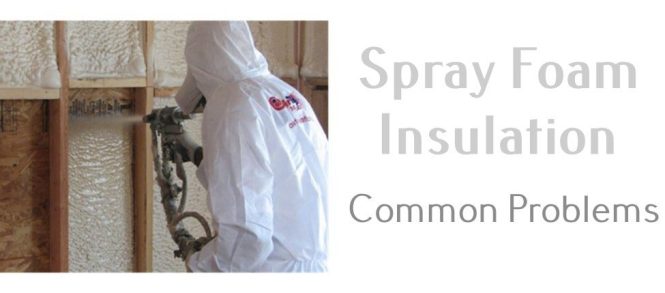

Solving roof insulation problems is essential for a comfortable and energy-efficient home. A well-insulated roof significantly impacts your energy bills and overall living experience. Roof insulation plays a critical role in maintaining a consistent temperature inside your home, reducing energy loss, and ultimately saving you money on utility bills. Many homeowners face challenges related to inadequate insulation, leading to drafts, heat loss in winter, and excessive heat gain in summer. This comprehensive guide will detail the common causes of roof insulation problems and offer practical solutions for resolving them. We’ll cover identifying the issues, understanding various insulation materials, and steps to take for maintenance. This article will help you understand and address roof insulation issues from various perspectives.
Identifying Roof Insulation Problems
Common Signs of Insulation Issues
Problems with roof insulation can manifest in various ways. Noticeable temperature variations between rooms or uneven heating/cooling are clear signs. Drafty areas around windows and doors, particularly during extreme weather, often indicate a lack of proper insulation. High energy bills compared to neighbors with similar homes can point to inefficient insulation. Another sign is visible moisture or mold growth inside the attic or roof space. This could indicate inadequate ventilation or moisture buildup related to the insulation itself.
Understanding Insulation Materials
Different Types of Roof Insulation
Various materials are used for roof insulation, each with its benefits and drawbacks. Fiberglass batt insulation is a popular choice due to its cost-effectiveness and ease of installation. Spray foam insulation provides excellent thermal performance and can fill gaps for better sealing. Rigid foam insulation is often used as a sheathing material providing strength and a stable base for other insulation layers. Choosing the right material depends on factors such as your budget, the specific climate, and the existing structure of your roof.
Addressing Common Insulation Problems
Identifying the Root Cause
Addressing roof insulation problems effectively begins with identifying the root cause. Assess the existing insulation. Is it the correct type for your climate and home structure? If it’s an older home, the insulation might need upgrading. Inspect for gaps or missing sections in the insulation, particularly around roof penetrations or joints. Check for any signs of moisture or pests that could be impacting the effectiveness of your current insulation. This will prevent reoccurring issues later on.
Maintenance for Long-Term Solutions
Regular Inspection and Maintenance
Regular maintenance of roof insulation is key to preventing issues. An annual inspection can help identify potential problems before they become major issues. Look for signs of damage, pest activity, and inadequate ventilation that could compromise the insulation’s effectiveness. A thorough inspection can reveal subtle issues, allowing for prompt repairs and preventing larger problems later. Proper ventilation is also critical to prevent moisture buildup that can damage insulation and increase the risk of mold growth. Ensure that the ventilation system is working correctly.
Professional Assistance for Complex Cases
When to Call a Professional
Sometimes, resolving roof insulation problems requires professional assistance. If you notice extensive damage, complicated access issues, or you lack the necessary expertise to handle the problem, contacting a qualified roofing contractor is recommended. They have the tools and expertise to diagnose the issue accurately and recommend the appropriate solution. A qualified contractor can also provide accurate estimates of the cost and time required to complete the work.
How often should I have my roof insulation inspected?
Regular inspections are recommended at least once a year, particularly during the fall and spring. This allows you to detect and address minor issues before they escalate into more serious problems. This proactive approach minimizes long-term issues, helps ensure consistent energy efficiency, and reduces overall repair costs.
Can I insulate my roof myself?
While some basic insulation tasks are possible for homeowners, intricate installations or complex repairs often require professional assistance. If you’re uncertain about the type of insulation needed or the proper installation procedures, it’s best to seek professional help. Professionals have the necessary equipment and expertise to ensure the job is done correctly, preventing future problems and ensuring lasting results.
What are the benefits of proper roof insulation?
Proper roof insulation leads to significant energy savings. It helps maintain a consistent indoor temperature throughout the year, reduces energy consumption for heating and cooling, and contributes to a healthier indoor environment. Proper insulation enhances your home’s overall comfort and value and also enhances the structural integrity of the roof and home.
What are the different types of insulation?
There are several types of insulation, including fiberglass, cellulose, spray foam, and rigid foam. Fiberglass is commonly used and relatively affordable, while spray foam provides superior insulation and sealing. Cellulose is an environmentally friendly option, while rigid foam is often used as a sheathing material. Each type has its pros and cons, so careful consideration of your needs and budget is essential when making a choice.
Frequently Asked Questions
What are the common causes of roof insulation problems?
Common causes include improper installation, inadequate insulation materials for the local climate, and insufficient ventilation. Weather damage, like strong winds or hail, can also damage existing insulation. Pest infestation is another factor that negatively affects the insulation and should be treated promptly.
In conclusion, solving roof insulation problems is crucial for energy efficiency, comfort, and the longevity of your home. By understanding the common issues, implementing the right solutions, and maintaining your roof insulation regularly, you can significantly reduce your energy bills and create a more comfortable living space. Contact a qualified roofing professional for a free inspection and quote to address any issues you might have. They can help you determine the best approach to ensure a well-insulated roof.